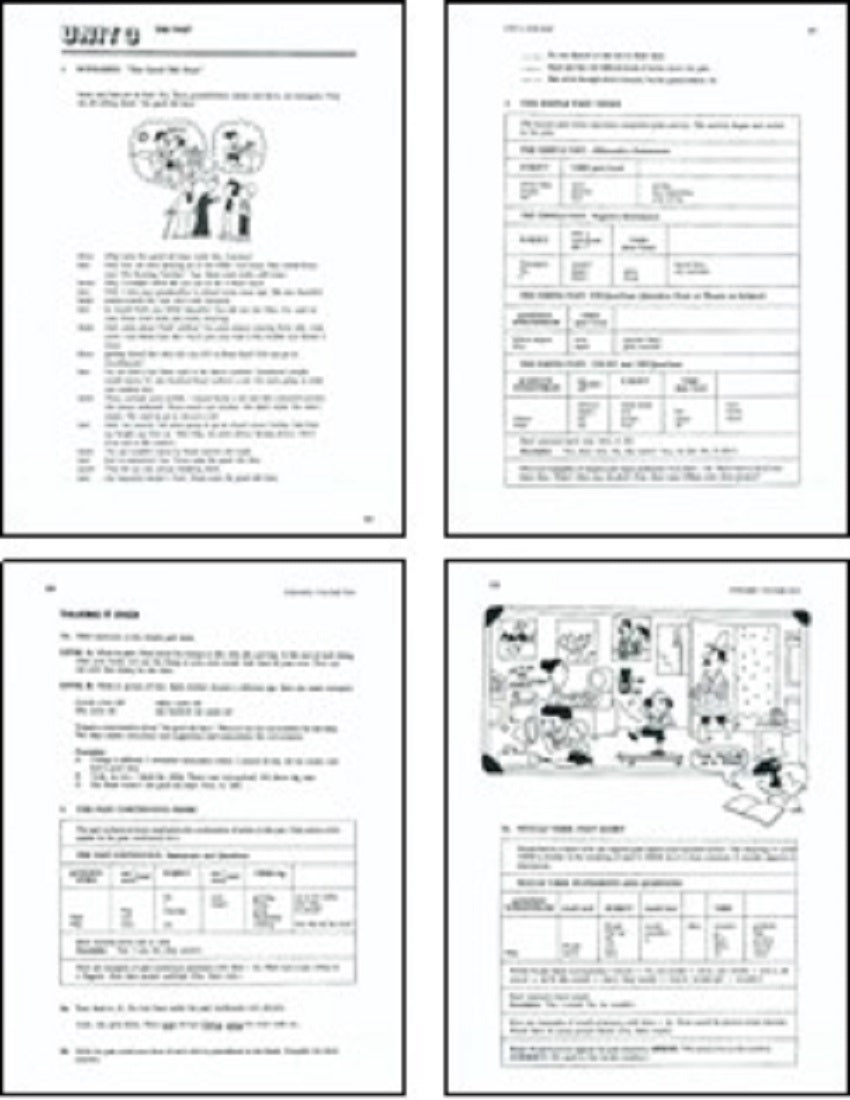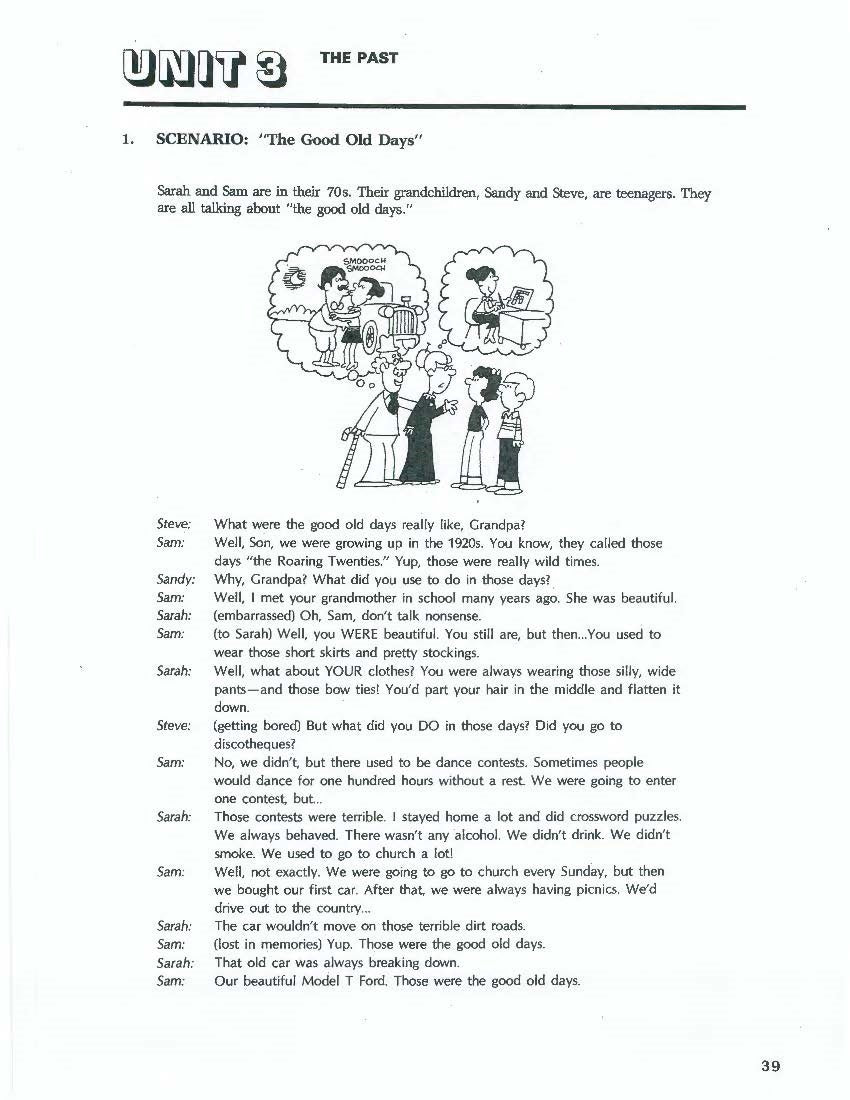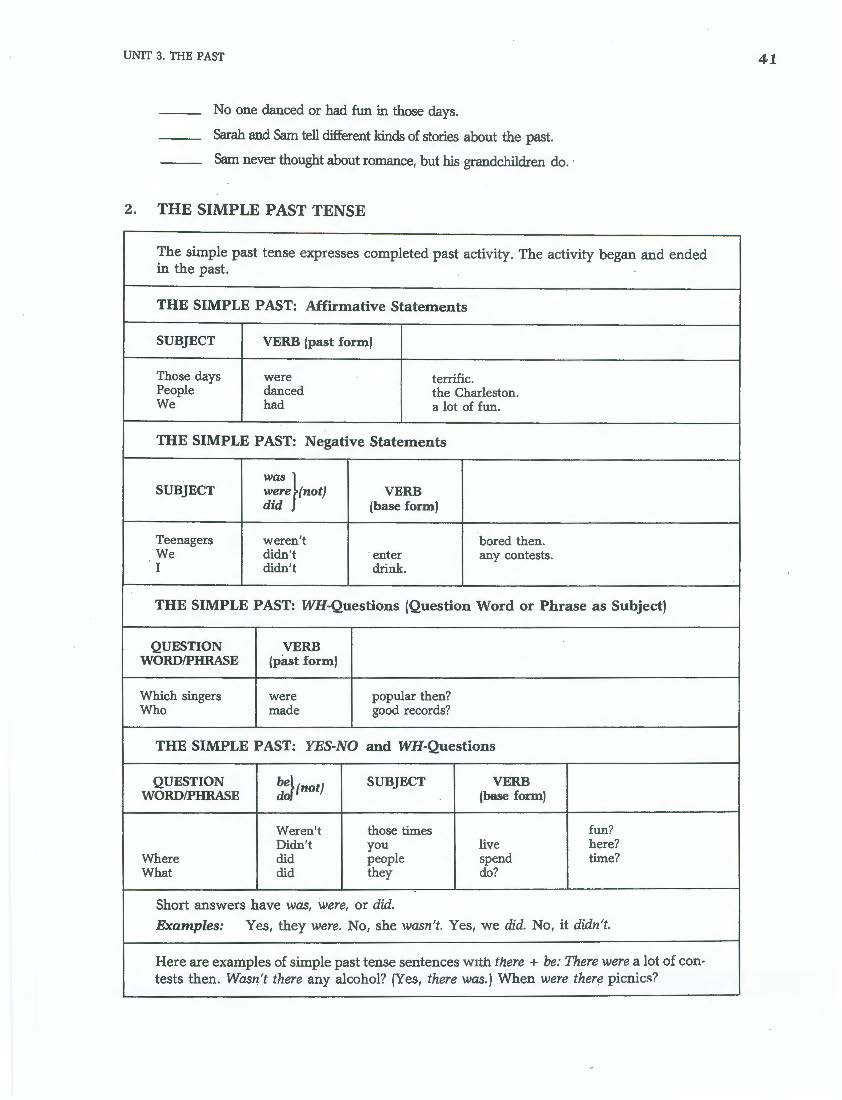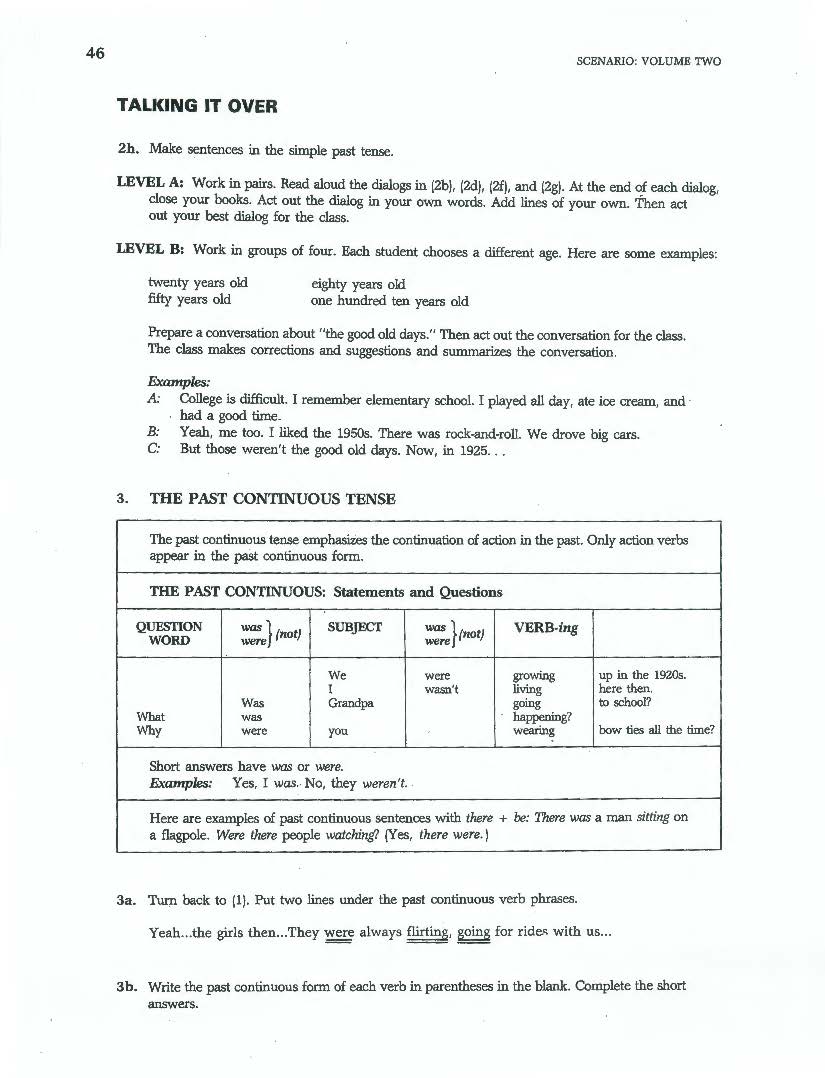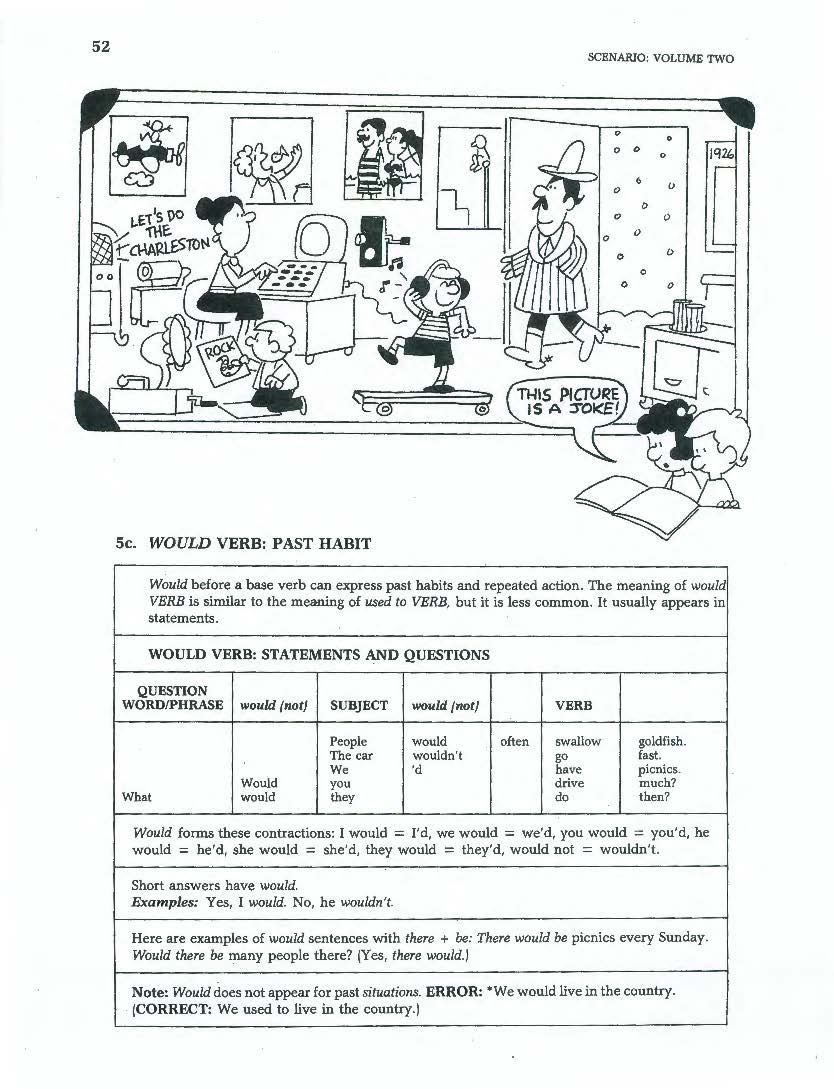1
/
of
5
Work/Life English
D-09.07 Use All Kinds of Verb Phrasing to Talk about the Past
D-09.07 Use All Kinds of Verb Phrasing to Talk about the Past
Regular price
$4.00 USD
Regular price
Sale price
$4.00 USD
Unit price
/
per
Unit 3 (The Past: “The Good Old Days”) of the Original Scenario, Volume Two: English Grammar in Context, pages 39-57
19 Pages
Who It’s For: (Teachers & Helpers of) High Beginning to Intermediate Language Learners That Prefer Conventional-Looking Materials
Why It’s Useful: Sometimes, methodical acquirers of grammar prefer the linear (one numbered section after another) layouts of “old-fashioned” black-and-white text pages—especially if they’re built around familiar, old and comfortable stereotypes. In this conventional sequence of segments, a recognizable “old couple” reminisces about the “days of old” (“olden times”) to their disbelieving grandchildren.
What You’ll Do:
[1] Have fun with the cliché-laden page 39 Scenario, “The Good Old Days,” which satirizes disparities in the memories and attitudes of old vs. young generations. In doing Comprehension Exercises 1a-1c, notice the structure and meanings of their past-time phrases. In boxed Grammar Explanations + related Exercises 2-2g (forms + patterns of the Simple Past, with spelling instruction and irregular verb vocabulary. In 2h. “Talking It Over” on page 46, use your knowledge, experience, and imagination in creating “memory conversations” from the viewpoints of various age groups.
[2] In 3-4d on pages 46-50, review and imbed forms and uses of the Past Continuous. Comparing both of the tense forms introduced so far, use the “Talking It Over” and “Writing It Down” to retell both visual Strip Stories and your memories of exciting past events in your own lives.
[3] In 5-5f on pages 50-53, revisit uses of used to / would + Verb for past customs, habits, or repeated activity that no longer endures. Use visual cues to help you recall and share your own flashbacks.
[4] Sections 6-6d on pages 54-56 highlights the “Future in the Past.” Use them to practice its patterns and to evoke and describe your own reflections on what didn’t happen (as planned) in days gone by.
[5] “Put It All Together” in the Summary sections that end the Unit.
Couldn't load pickup availability
